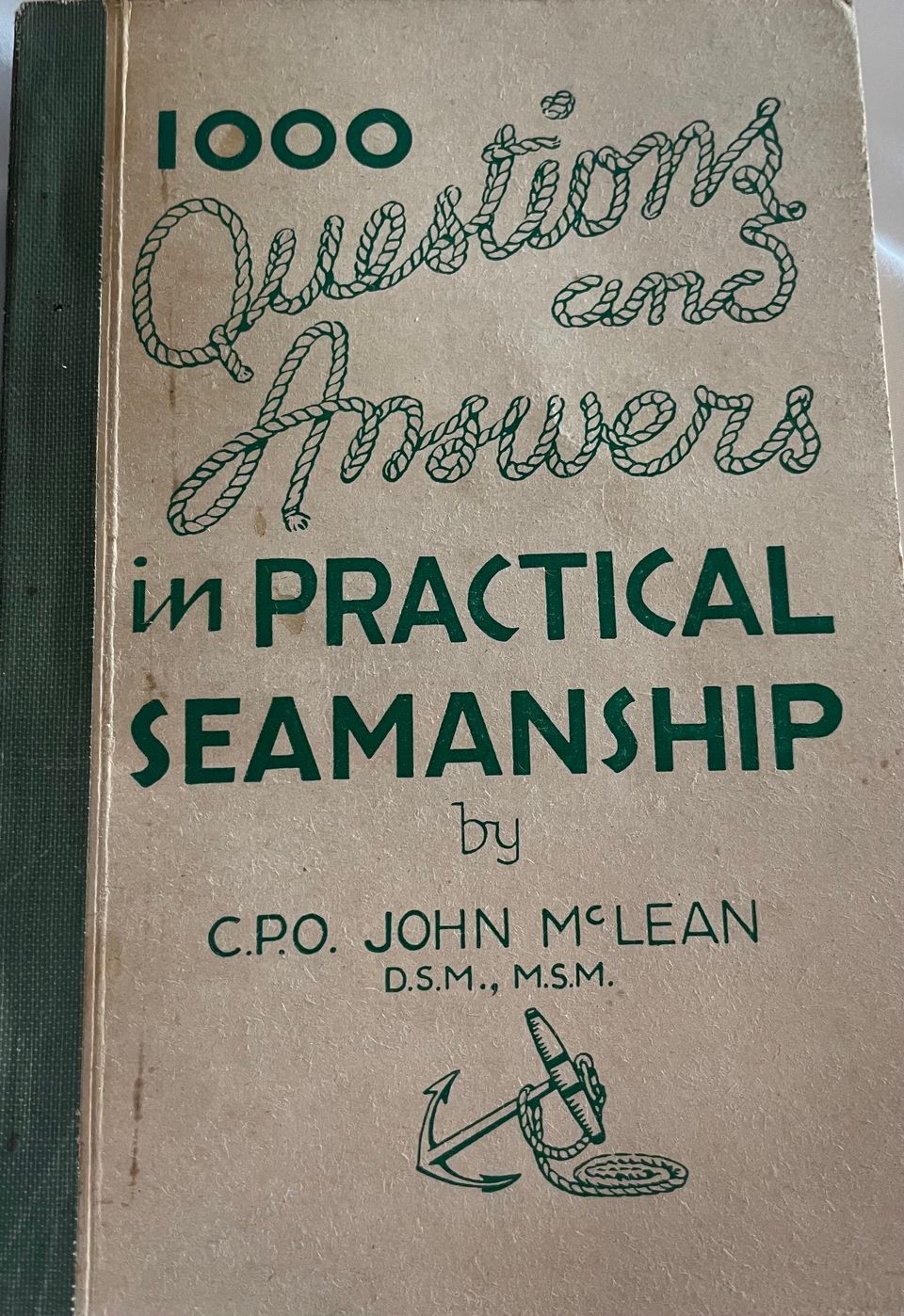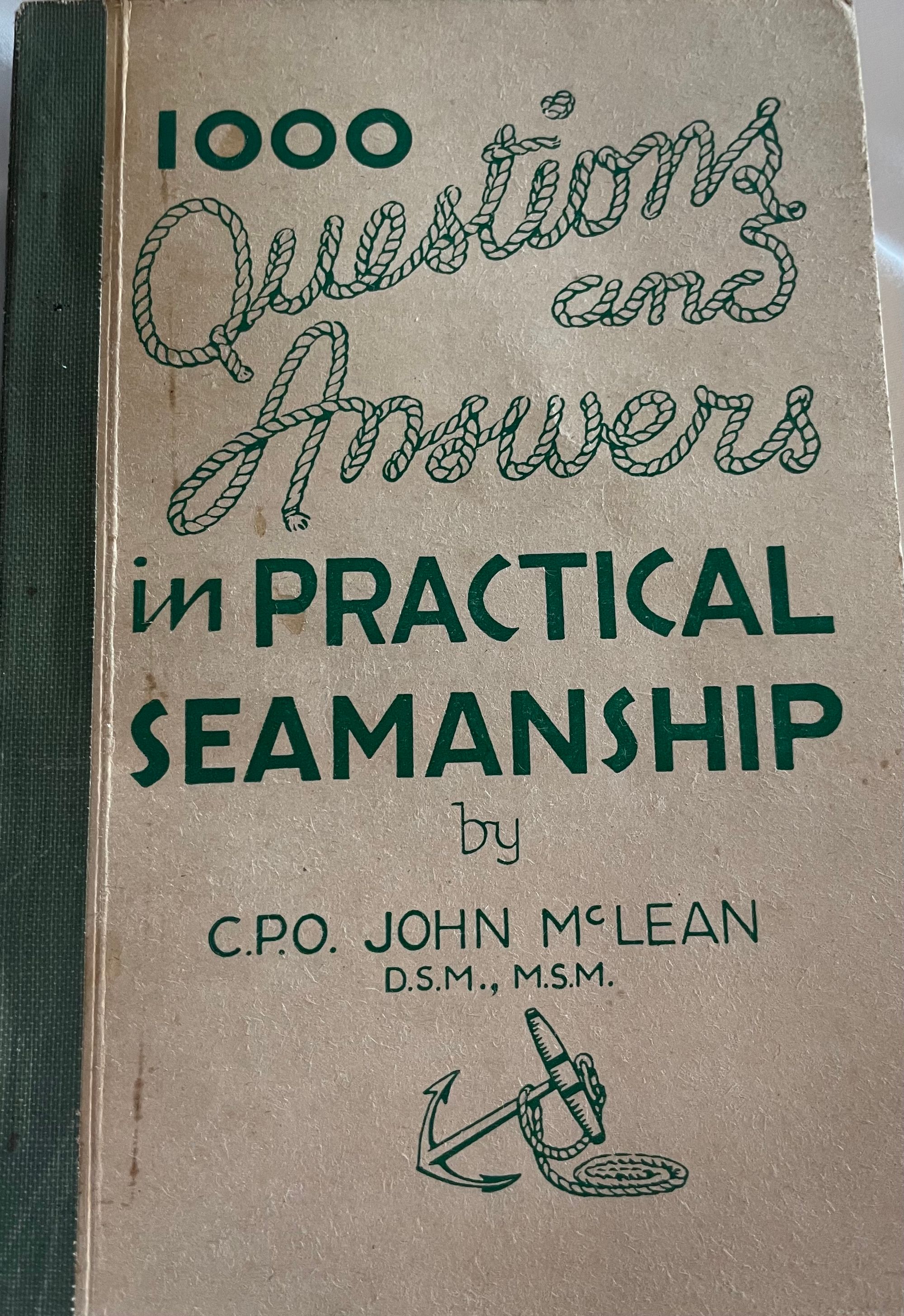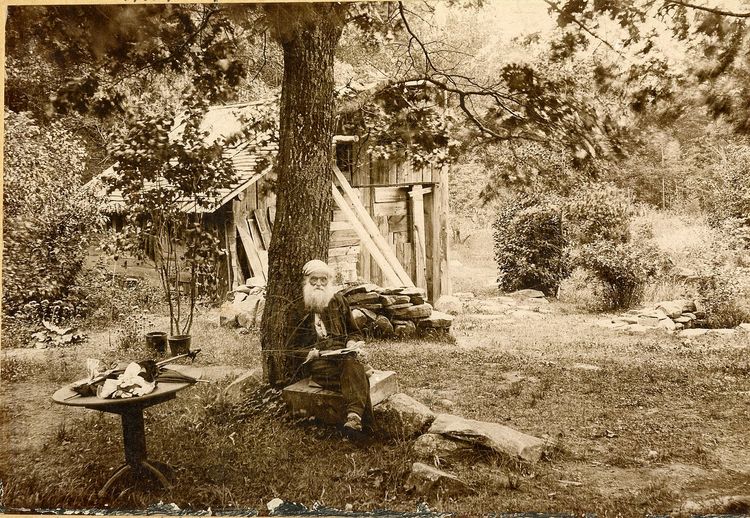Questions and Answers in Practical Seamanship


We can take the editorial note ("Although this book is published with the permission of the Australian Naval Board, it must not on that account be regarded as an official publication") to mean Practical Seamanship is to be understood as an ex oficio rather than ex cathedra statement, that is, tolerated rather than endorsed.
Careful readers will observe that the author and the source of the epigraph are the same person. This is the kind of confidence one wants from a sea captain!

You may take a partial quiz yourself ("What kind of 1940s-era Australian sailor are you?"). Answer key is below.
- What is a figure of eight knot used for?
- What hitch would you use to secure a tail jigger to a hawser?
- How would you shorten a buoy rope?
- What do we splice into the ends of all hemp and grass hawsers?
- How would you know that a rope had been made in Chatham?
- What must we know when sounding from the chains by night?
- What is an Azimuth mirror used for?
- What is an occulting light?
- What does "omr" mean?
- Name all the parts of a boat you know.
- What provisions, water and gear are carried in the sea boat?
- What is the meaning of "gybe"?
- What rig has a pinnace got?
- What is a deadlight?
- What provisions are generally supplied in sacks?
- Why must corned beef boxes not be bumped?
- Why are churches shown on charts?
- What was the name of the three-headed watchdog that guarded the gates of Hades?
- What is the American system of naming warships?
- What is the meaning of the term "foul bottom"?
- To prevent the end of a rope from unreeving. (See diagram 10.)
- A clove hitch.
- By making a sheep shank. (See diagram 17.)
- A becket.
- By the yellow "Rogue's Yarn."
- The drift.
- For taking the bearing of the sun, or any object.
- A light which every now and then goes out, the duration of darkness being always less than, or equal to, the duration of light.
- "Overcast, misty, rain."
- Keel, hog, keelson, stem, floors, planks, top strake, garboard strake, gunwale, rubber, breast hook, thwart, knees, risings, sailing thwart, head sheets, bilge rail, fore sheets, and stretcher rail.
- 1 compass, 1 tin biscuits, 1 box preserved meat, 2 barricoes of fresh water. Sea boat's box containing shore lights, Verey's pistol, signal cartridges, boat's bag, carpenters' bag, lead and line, lantern and candles, 1 lifebelt for each of the crew and the officer of the boat.
- When careless steering of a boat running free, allows the wind to get under the lee side of the sail, causing it to gybe violently across the boat.
- De Horsey.
- A steel plate, fitted with two pairs of lugs similar to a scuttle, hinged on a scuttle frame.
- Sugar, split peas, haricot beans, flour, marrow-fat peas, rice, and salt.
- Because the meat is likely to get bruised and go bad.
- Because they are conspicuous.
- Cerberus. [Ed. note – I don't know why that question is in this book. Possibly the author needed to pad things out in order to reach 1,000.]
- Battleships are called after States, cruisers after cities, destroyers after famous men, aircraft carriers after battles, submarines after fish, and minesweepers after birds.
- When a ship's bottom is covered with barnacles, weeds, etc. Also the bottom of the sea, if rocky, or unsafe from wrecks.
[Photos taken by me]



Comments ()